| Class: | angiosperms |
| Order: | Caryophyllales |
| Family: | Polygonaceae |
| Genus: | Atraphaxis |
| Scientific name: | Atraphaxis frutescens (L.) Ewersm. |
| Name acc. to: | Gubanov 1996 |
| Herbar: | list records    |
| Synonym: | A. frutescens (L.) K. Koch (acc. to Grubov 1982) |
| Confuse with: | Atraphaxis virgata (Regel) Krassn. |
| Comments: | A. frutescens differs in annual branches only slightly protuding from bush, dead for much of their length; terminal inflorescense less branched than of A. virgata (weak differentiating characteristic); inflorescense a raceme (A. virgata a panicle); leaves of annual branches small 10-17 mm long (A. virgata 15-30 mm long). Sometimes difficult to differ from A. virgata, between both species transition forms are supposed to exist. |
| Link to Flora of China: | http://www.efloras.org/browse.aspx?flora_id=2&name_str=Atraphaxis+frutescens |
| Link to Flora of China: | http://www.efloras.org/browse.aspx?flora_id=2&name_str=Atraphaxis+frutescens |
| open map in a new window |  |
| Habitat: | Sandy steppes, slopes and bottom of dry riverbeds, pebbles, debris slopes of mountains and hills (Grubov 2001). |
| Habit (i)general appearance of a plant | |
| Growth form: (i)Herb, shrub, tree or climber. | herb (i)Herbaceous, erect plant, up to 2m high, mostly with a leafy shoot; if perennial, shoots die to the ground each season, shoots are not woody
example: Artemisia pectinata   inherited by family Polygonaceae: herb inherited by family Polygonaceae: herb
shrub, subshrub or semishrub (i)Shrub, multi-stemmed, mostly (0.2) 0.5 - 5 m high, shoots woody up to the tip
example: Caragana leucophloea   inherited by family Polygonaceae: shrub, subshrub or semishrub inherited by family Polygonaceae: shrub, subshrub or semishrub
|
| Parasite status: (i)Is the plant a half- or full parasite? | no parasite/saprophyte (i)Plant fully autonomous, leaves with chlorophyll
example: Most plants, Ranunculus  inherited by family Polygonaceae: no parasite/saprophyte inherited by family Polygonaceae: no parasite/saprophyte
|
| Water or terrestrial plant: (i)Where do the plants grow? | terrestrial (i)Plant grows on dry land
example: Orostachys spinosa  inherited by family Polygonaceae: terrestrial inherited by family Polygonaceae: terrestrial
|
| Leaf (i)expanded, usually photosynthetic organ of a plant (including phylloclades) | |
| Leaf development: (i)Structure and development of leaves. | with green leaves (i)Plant with green leaves  inherited by family Polygonaceae: with green leaves inherited by family Polygonaceae: with green leaves
|
| Leaf veination: (i)Arrangement of the main veins of a leaf. | pinnate (i)One main vein, several side veins, sometimes inconspicuous
example: Cicerbita     inherited by family Polygonaceae: pinnate inherited by family Polygonaceae: pinnate
|
| Flower (i)reproductive portion of the plant, consisting of sepals, petals, stamens, and pistils | |
| Flower appearance and pollination: (i)General appearance of the flower. | not attractive, wind-pollinated or some water plants (i)Small, colourless or green flowers
example: Betula, grasslike plants: Carex, Setaria, Juncus  inherited by family Polygonaceae: not attractive, wind-pollinated or some water plants inherited by family Polygonaceae: not attractive, wind-pollinated or some water plants
|
| Flower colour: (i)Attention: assess colour of the most colourful parts of the flower, but not of the stamens; be aware of single plants with a mutation (mostly white) on flower colour. | greenish (i)petals absent or not distinctly different from colours of leaves, only stigmas (white) or anthers (yellow) may differ in color
example: Chenopodium, Triglochin  inherited by family Polygonaceae: greenish inherited by family Polygonaceae: greenish
red (i)Reddish (also orange) to deep red
example: Lilium, Rhododendrum  inherited by family Polygonaceae: red inherited by family Polygonaceae: red
|
| Perianth arrangement: (i)Attention: in some plants, flowers may be dimorphic in different ways (dioecious or gynodioecious). If flowers vary, record the characters of the most showy flowers. | simple, similar (i)Only one type of perianth leaves (tepals)
example: Tulipa   inherited by family Polygonaceae: simple, similar inherited by family Polygonaceae: simple, similar
|
| Diameter of flower: (i)Diameter of flower or flower head. | from 5 mm to 10 mm (i)
example: Stellaria  inherited by family Polygonaceae: inherited by family Polygonaceae:
from 10 mm to 20 mm (i)
example: Potentilla  inherited by family Polygonaceae: inherited by family Polygonaceae:
|
| Flower symmetry: (i)Symmetry of the perianth leaves. Attention: to assess this character, look on sepals, petals and stamens, but neglect carpels and ovary. | radiary, regular (actinomorphic) (i)More than two axis of symmetry
example: Saxifraga: 5; Iris: 3   inherited by family Polygonaceae: radiary, regular (actinomorphic) inherited by family Polygonaceae: radiary, regular (actinomorphic)
|
| Flower form: (i)common forms of flowers ? Veronica | simple (flat) - Do not confuse with inflorescences as in some Asteraceae (i)Petals spread out, flower appearing flat
example: Mollugo, Trientalis, Pulsatilla, Saxifraga   inherited by family Polygonaceae: simple (flat) - Do not confuse with inflorescences as in some Asteraceae inherited by family Polygonaceae: simple (flat) - Do not confuse with inflorescences as in some Asteraceae
|
| Sepal number: (i)Number of sepal leaves (outer perianth leaves, calyx leaves, mostly greenish). Attention, this character applies only for flowers separated in sepals and petals, thus excluding most monocots. Be aware of the bracts (involucral leaves) of Asteraceae flowerheads, do not qualify these as sepals! Be also aware in Rosaceae is often an epicalyx developed, in this case count all parts. | 3 (i)
example: Baldellia, Alisma  inherited by family Polygonaceae: 3 inherited by family Polygonaceae: 3
|
| Spur: (i)A hollow, slender, sac-like appendage of the perianth leaves, storing nectar. | no spur (i)Flower without appendage
example: Peganum  inherited by family Polygonaceae: no spur inherited by family Polygonaceae: no spur
|
| Fruit (i)the seed bearing organ, with or without adnate parts; a ripened ovary and any other structures which are attached and ripen with it. Aggregate fruits are handled like simple fruits for determination. | |
| Consistency: (i)Fleshy fruits or dry fruits, see dispersal adaptations for further classification. | dry (i)With a dry outer shell, no fleshy parts, but seed (embryo) could be edible  inherited by family Polygonaceae: dry inherited by family Polygonaceae: dry
|
| Type of fruit: (i)Common fruit types (including pseudocarp). | Indehiscent fruits  inherited by family Polygonaceae: Indehiscent fruits inherited by family Polygonaceae: Indehiscent fruits
Solitary fruits (i)     inherited by family Polygonaceae: Solitary fruits inherited by family Polygonaceae: Solitary fruits
nut or nutlet (i)Dry fruit with a single, hard stone inside (and usually a large often edible embryo)   inherited by family Polygonaceae: nut or nutlet inherited by family Polygonaceae: nut or nutlet
|
| Seed number: (i)Estimate the number of seeds per fruit, if recognizable seeds are in the fruit (in rare cases a fruit may contain one seeded nuts: rose hip, carex). | 1 (i)A single seed (stone) or seed and fruit wall tightly connected
example: Prunus, Amygdalus: drupe  inherited by family Polygonaceae: 1 inherited by family Polygonaceae: 1
|
| Root / shoot below ground (i)plant part below ground (in most cases), including below ground shoots, without leaves | |
| Root type: (i)Organisation of the roots. | allorhizous (i)Plant with a conspicuous tap root, one larger tap root with side roots
example: Dicotyledonae  inherited by order Caryophyllales: allorhizous inherited by order Caryophyllales: allorhizous
|
| Distribution (i)region where the plant is likely to be found | |
| Distribution (Veg. Zones): (i)acc. to Grubov 1952 | Khangai (i)In distribution data often named as '3' 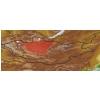
Great Khingan (i)In distribution data often named as '5' 
Khobdo (i)In distribution data often named as '6' 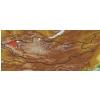
Mongolian Altai (i)In distribution data often named as '7' 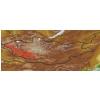
East Mongolia (i)In distribution data often named as '9' 
Depression of Great Lakes (i)In distribution data often named as '10' 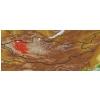
Valley of Lakes (i)In distribution data often named as '11' 
East Gobi (i)In distribution data often named as '12' 
Gobi-Altai (i)In distribution data often named as '13' 
Dzungarian Gobi (i)In distribution data often named as '14' 
Transaltai Gobi (i)In distribution data often named as '15' 
Alashan Gobi (i)In distribution data often named as '16' 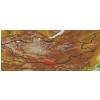
acc. to: Gubanov 1996 |
| Distribution Khangay: (i)acc. Flora Khangaya 1989 | VI
|